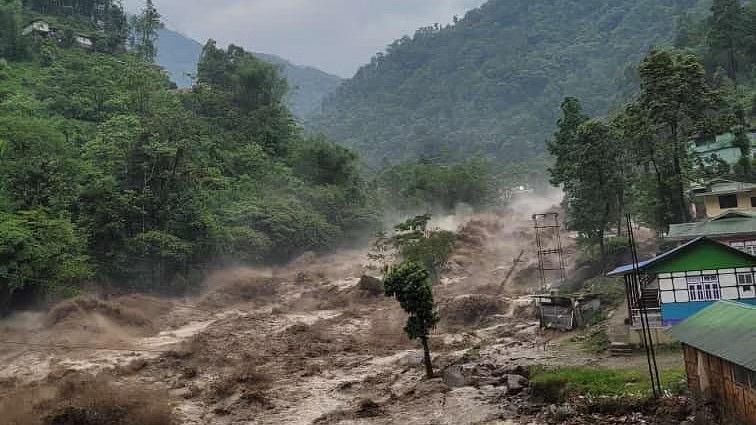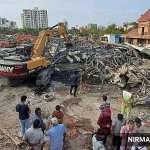Nearly a year after the devastating floods in North Sikkim, which resulted from the bursting of a glacial lake, a dispute has emerged between the Sikkim government and a central government panel. The floods, which occurred in October 2023, claimed the lives of 50 people and caused extensive damage, including the destruction of the 60-meter Chungthang dam and significant infrastructure loss estimated in the thousands of crores.
The Controversy
The central panel, established by the National Dam Safety Authority (NDSA) under the Ministry of Jal Shakti, concluded that the floods were caused by a Glacial Lake Outburst Flood (GLOF). However, the Sikkim government argues that the incident was due to a cloudburst. The 10-member committee, led by former Central Water Commission chairman R.K. Jain, submitted its report to the ministry in June 2024, but the findings have yet to be made public.
The Insurance Claim at Stake
The disagreement over the cause of the floods has significant financial implications. The Sikkim Urja Limited (SUL) has filed an insurance claim exceeding ₹2,500 crore for damages. However, if the floods are classified as GLOF, the insurance coverage for damages is limited to ₹500 crore. The state government has been actively advocating for the incident to be recognized as a cloudburst to maximize their insurance payout.
Evidence and Findings
Following the floods, Sikkim’s Chief Secretary V.B. Pathak initially stated that meteorological data did not support a cloudburst as the cause. However, the Sikkim government later changed its stance and classified the incident as a cloudburst, highlighting the evolving nature of the narrative.
The central committee, comprising senior officials from various departments, determined that scientific data and satellite imagery pointed to a GLOF. Their report indicated that the volume of water released from South Lhonak Lake was about 40 million cubic meters, significantly surpassing the capacity of the Chungthang dam.
Recommendations for Future Safety
The committee suggested that the installation of an Early Warning System (EWS) could have minimized loss of life. Additionally, it recommended considering concrete dams for future projects in the region to enhance resilience against such catastrophic events.
Sikkim Government’s Position
In its representation to the Jal Shakti ministry, the Sikkim government maintains that the central committee’s report relies on a hypothesis of GLOF and interprets data to support this conclusion. They argue that multiple factors contributed to the floods, including significant rainfall, landslides, and hydraulic blockages caused by debris.
Prabhakar Rai, Director of Sikkim Disaster Management Authority (SDMA), emphasized that the extreme flood resulted from a combination of natural events rather than a single cause. The state government has called for a comprehensive field investigation and a thorough bathymetric survey of the lake before reaching any definitive conclusions.
Conclusion
As the Sikkim government and the central panel continue to dispute the cause of the 2023 floods, the outcome will significantly impact the insurance claim and the future of infrastructure development in the region. Ongoing investigations and discussions will play a crucial role in resolving this contentious issue.






















